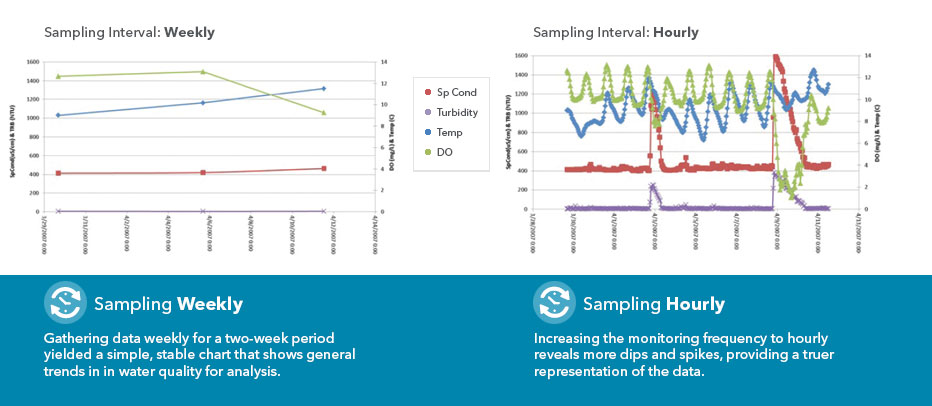Measurement Methods
Multiparameter
Our multiparameter instruments allow for concurrent measurement of critical water quality parameters that are imperative to understanding, protecting, and improving aquatic habitats. These vital measurements include in-situ readings for dissolved oxygen, pH, turbidity, salinity, temperature, total algae content, and more. We offer instruments for both baseline sampling efforts, as well as continuous monitoring systems. These systems are capable of recording high temporal resolution data, which detects events (meteorological, pollution-related, or otherwise) that may impact water quality.
Spot Sampling & Continuous Monitoring
In-situ monitoring begins with handheld sensors. Today, handhelds remain a mainstay of water quality monitoring fieldwork, allowing people to gather lab-quality measurements in the field. They have made water quality testing more efficient and timelier, as they can capture measurements of parameters that may drift before they reach a laboratory. Led by YSI's Professional and ProDIGITAL Series handhelds, sampling instruments have become lighter, faster, and easier to use. These industry-leading instruments open up opportunities for water quality measurements to a broader world of scientists and environmental managers.
Yet without monitoring water quality 24/7, 365 days a year, it is impossible to understand an aquatic environment. Sondes — French for "probe" — push in-situ water quality measurement to new heights, or at least to new depths. Protecting a suite of sensors in a sleek, ruggedized body, and channeling the data into onboard memory, sondes open the door to long term unattended monitoring — the constant monitoring that allows scientists to observe midnight activity and chart diurnal cycles. With the ability to monitor remote locations constantly, for long periods, without the need for an operator on-site, sondes are revolutionizing water quality monitoring.
